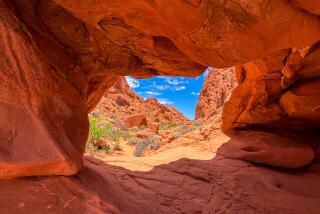Bird-watching in Nevada’s Ruby Mountains
Lamoille Canyon in northeastern Nevada’s Ruby Mountains doesn’t attract many tourists. But I didn’t come seeking crowds, neon lights or fine dining. I came here for something that’s increasingly rare in America: a dash of mountain vistas mixed with a starry night sky and a generous helping of Western birds.
I first visited the Ruby Mountains in July. I liked it so much, I returned in August. The stunning scenery, remote location and excellent riparian habitat make it a great place to bird-watch. I wasn’t disappointed on my second trip either.
Even the drive to Lamoille Canyon exceeded my expectations. On our roundabout route to the canyon, we drove north along Nevada 278. In this arid landscape, the telephone poles get more use from perching raptors than from chatting Nevadans. A large ferruginous hawk, easily identified by its white breast and yellow gape, eyed us warily from a pole when we pulled over to get a better look.
Dark and light morph red-tailed hawks scanned the surrounding buttes and sagebrush for small rodents. A prairie falcon with a chestnut mustache studied blackbirds foraging in the lush grass of a nearby ranch.
Just over the top of a hill, my friend Matt and I noticed a large silhouette on one of the poles. It looked as big as the mini-refrigerator in the motel where we’d stayed the night before. But refrigerators don’t have wings. The golden eagle remained almost motionless, its robust talons clutching its perch. Instead of fleeing as we opened the car door, it challenged us to a staring match.
Several miles later, on a flat close to some abandoned heavy construction equipment, we noticed about 20 cigar-shaped common nighthawks swooping low over the ground. It was almost 10:30 a.m. and the asphalt was hot to the touch. Flies buzzed lazily, and there was a heavy aroma of sage. But the nighthawks were undeterred. Their angled wings and white wing bars flashed and rolled as the birds chased down insects. It amazed me that they didn’t collide with one another in their whirlwind pursuits.
A rough terrain
When we arrived in Elko, I purchased a fishing license at a sporting-goods store -- serious business in Nevada -- because the form requires your Social Security number. In California, you are asked to furnish only your address, age, height and weight.
On the way out of the shop, my friend noticed a woman wearing a T-shirt that said “WRANGLER” In small print below the acronym, it read “Western Ranchers Against No Good Leftist Environmental Radicals” -- a reminder that not everyone in this part of the country is a card-carrying National Audubon Society member.
Beyond Elko, the green crest of the Ruby Mountains rose over the Great Basin like some earthen tsunami about to break over the city. Patches of snow dotted some of the highest peaks. The harsh afternoon light erased the fine detail of rock, snow and pasture. Small ranch houses rested at the base of the Rubies.
The mountains got their name from the ruby-red garnets found by early explorers. And what is clear to even the most remedial geology student is that glaciation played a role in the formation of the peaks. U-shaped valleys, tarns and cirques punctuate these mountains. The terrain is suited to sure-footed mountain goats and bighorn sheep, which call the Rubies home. Many species of birds also live among the aspen groves that line the canyon slopes. Limber and whitebark pine cling to high, rocky outcroppings.
Our car ground up the mountains in low gear. We stopped at a picnic area at the bottom of Lamoille Canyon. A creek worked its way through the canyon lined by large cottonwoods. Even though it was a scorching afternoon, the birds were singing. A bird landed on the top of a dead cottonwood. Moments later, its rowing flight and pink head revealed it to be a Lewis’s woodpecker. At a distance, the woodpecker resembled a crow.
The behavior of Lewis’s woodpeckers, named for explorer Meriwether Lewis, differs from other woodpeckers in how they catch food -- they frequently snare insects on the wing. This woodpecker flew low over our heads, almost buzzing us, and disappeared into the foliage of a large cottonwood. Suddenly, we heard the cries of baby birds reach a pitched frenzy.
Then the woodpecker emerged from behind the tree and returned to the cottonwood snag. We watched as the routine was repeated three, four and five times. Gradually, we realized that not only had we spotted an unusual woodpecker, but we had found a nest as well.
Feathered families
Pleased with our good fortune, we hunkered down to observe. Farther up the creek, another woodpecker, ferrying lunch to its young, disappeared into a small hole in the crotch of a cottonwood. A raven, looking for an easy meal, watched from the parking lot near the cottonwoods. Did it know the location of the nests?
That night, after a camp dinner of pasta and tomato sauce, we listened as a thrush’s fluted melody accompanied the sinking of the sun below the canyon rim. The Big Dipper rose, its ladle gesturing toward the North Star. Now, each hour brought a different shade of darkness: gunmetal gray, violet and, at long last, charcoal. Thirty minutes later, I was tucked into my sleeping bag, gazing at the stars tangled up in the branches of aspen. As I drifted off to sleep, I knew I’d be back this way again.
More to Read
Sign up for The Wild
We’ll help you find the best places to hike, bike and run, as well as the perfect silent spots for meditation and yoga.
You may occasionally receive promotional content from the Los Angeles Times.






